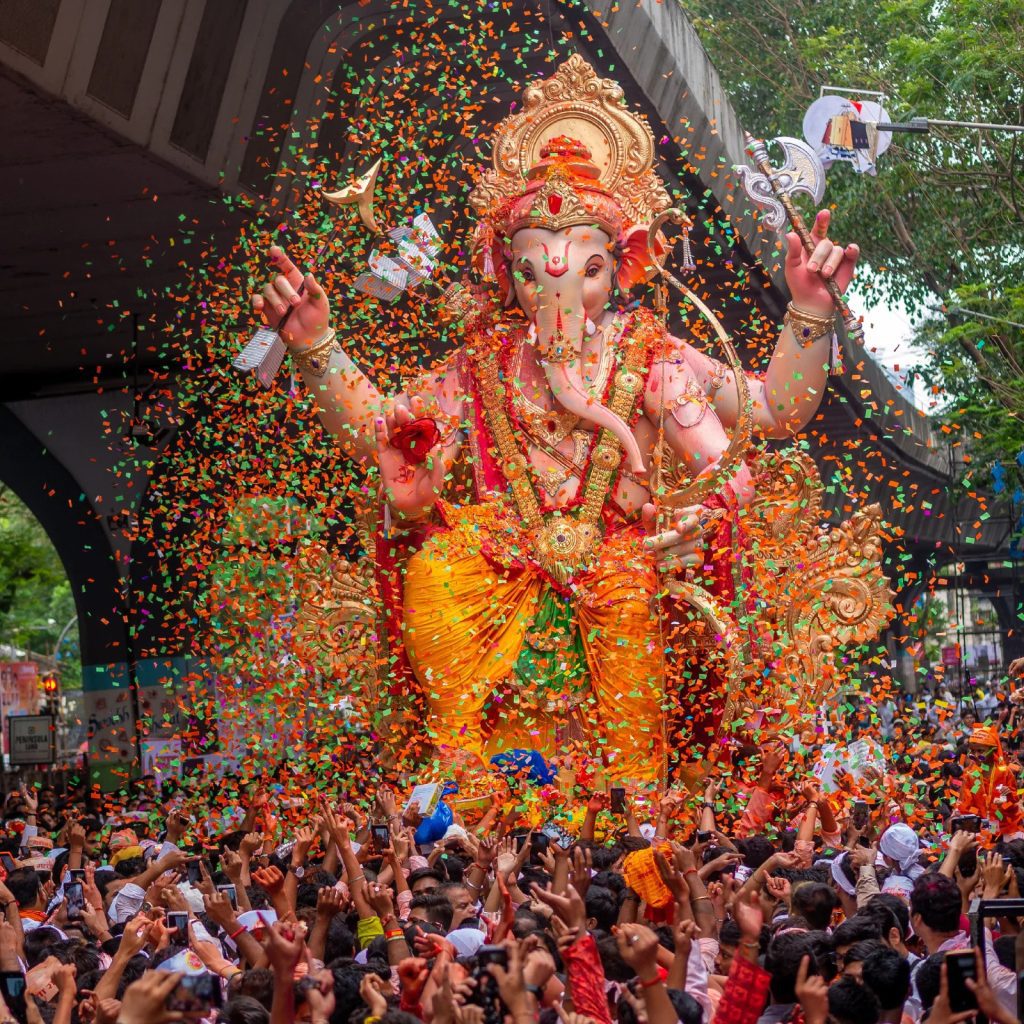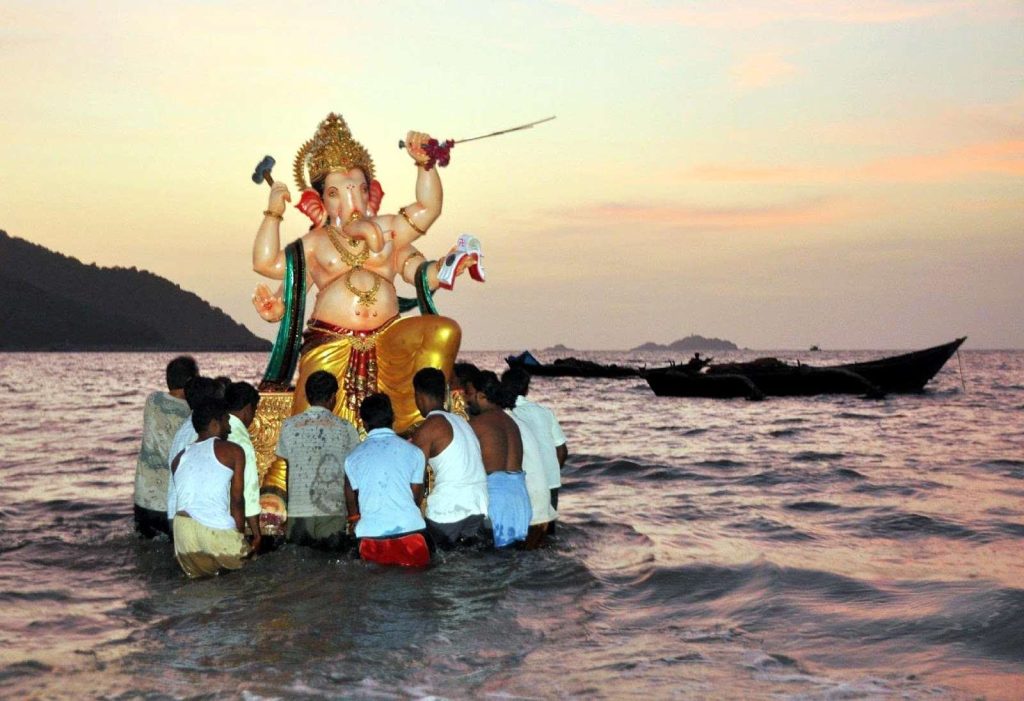- Private car and driver in Delhi / India
- +91-8447445445
- info@discoverindiabycar.com sugar.ankit@yahoo.com
 +91-9818434712
+91-9818434712
Ganesh Chaturthi

Ganesh Chaturthi, also called Vinayak Chaturthi or Ganeshotsav, is an occasion when Hindus celebrate the birth of the god Ganesha. Ganesha’s clay idols are erected both privately in people’s homes and publicly on lavish pandals to commemorate the event. Chanting of Vedic hymns and Hindu scriptures, such as prayers and vrata, are among the customs observed (fasting). Among the prasada and offerings from the daily prayers distributed to the community from the pandal are sweets like modaka, which are said to be Ganesha’sfavourite. The idol is immersed in a nearby body of water, such as a river or sea, in a ritual known as visarjan on the day of Anant Chaturdashi, marking the conclusion of the festival 10 days after it started.
Religious conviction
Those who worship to Ganesha are thought to be able to accomplish their goals and desires. Ganesh Chaturthi’s main message is that those who worship to him are purged of their sins and led towards a life of wisdom and understanding.
History
Ganesh Chaturthi has been openly observed in Pune since King Shivaji’s time, though it is uncertain when (or how) this event first began (1630–1680, founder of the Maratha Empire). In the 18th century, the Peshwa, who were Ganesha worshippers, established a public Ganesh celebration in Pune, their capital city, during the Bhadrapad month.
Vinayaka Chavithi rituals
Throughout the 10-day festival, there are four main rites performed. The four of them are Pranapratishtha, Shhodashopachara, Uttarpuja, and Ganpati Visarjan.
Weeks before the festival really begins, anticipation for Ganesh Chaturthi starts to grow. The production of Ganesha clay idols in various positions and sizes has started.

Ganesha statues are positioned in artistically crafted “pandals” at homes, temples, and other locations. In addition, the statue is decorated with lights, garlands, and flowers. In the Pranapratishtha ceremony, a priest invokes life in the god by repeating mantras.
Thereafter, 16 blessings are bestowed upon the Ganesha image. This ritual is known as Shhodashopachara.

To celebrate, they play religious music, dance to drum beats, and light off fireworks. All of these activities intensify the joyful environment. The following ceremony, known as Uttarpuja, involves saying a sincere farewell to Ganesha. The ceremony known as Ganpati Visarjan that comes after has the statue currently submerged in water. They generally shout in Marathi “Ganapati BappaMorya, PurchyaVarshiLaukariya,” which translates to “Goodbye Lord, please come back next year,” as they carry the statue to the sea and immerse it.
Some followers of Lord Ganesha mark this day at their homes, while others visit public pandals to honour him. Ganesha receives the proper respect, prayers, and offerings from humans. Meals like the cherished Modak, Pooran Poli, and Karanji of Lord Ganesha are provided for friends, family, and visitors.








